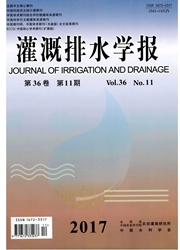

 中文摘要:
中文摘要:
自从可更新的 bioenergy 可以成为未来精力供应的一个实质的比例,对精力庄稼的生物资源的评价积累了普遍兴趣,并且当模特儿广泛地为精力庄稼收益的模拟被使用了。文学调查表明 23 个模型为模仿精力庄稼的生物资源被开发了或适应,包括错误眼角, switchgrass,玉米,白杨,柳树,甘蔗,和桉树类 camaldulensis。三个范畴(放射模型, water-controlled 庄稼模型,和综合模型与生物化学并且光合作用和呼吸途径) 根据过去常模仿生物资源生产过程的不同原则或途径为选择模型被探讨。史诗,年历, APSIM,索引顺序存取方法, MISCANMOD, MISCANFOR,森林区, DAYCENT,顶并且打与很少实验、统计的参数基于一条放射使用效率途径(后悔) 是放射模型。AquaCrop 模型是强调庄稼水使用,华盖盖子的表示,和玷污驾驶庄稼生长的蒸发和植物蒸发的土壤水分蒸发蒸腾损失总量的分离的一个典型水庄稼模型。CANEGRO, 3PG, CropSyst 和 DSSAT 是使用光合作用和呼吸途径的综合模型。秘密, LPJmL, Agro-BGC, Agro 朱鹭,和 WIMOVAC/BioCro, DNDC, DRAINMOD 草,和 AgTEM 是使用生物化学的途径的综合模型。综合模型主要是机械学的模型或与功能的模型结合,它与空间、时间的模式,但是与复杂参数和大量输入数据是动态的。精力庄稼模型与基于过程的模型结合了,例如史诗在打并且在 DSSAT 的 CANEGRO,提供为精力庄稼认为生物物理、社会经济、环境的回答和地址是可持续性和社会经济的目标的好例子。为精力庄稼生产率的模型的使用很快正在增加并且令人鼓舞;然而,相关数据库例如气候,打使用 / 登陆盖子,土壤,地形学,和管理数据库,是少见的。模型结构和设计假设,以及输入参数和观察数据,为模型开发和确认仍然是挑战。因此,一个全面框架,它包括一个高质量的
 英文摘要:
英文摘要:
The assessment of the biomass of energy crops has garnered widespread interest since renewable bioenergy may become a substantial proportion of the future energy supply, and modeling has been widely used for the simulation of energy crops yields. A literature survey revealed that 23 models have been developed or adapted for simulating the biomass of energy crops, including Miscanthus, switchgrass, maize, poplar, willow, sugarcane, and Eucalyptus camaldulensis. Three categories(radiation model, water-controlled crop model, and integrated model with biochemical and photosynthesis and respiration approaches) were addressed for the selected models according to different principles or approaches used to simulate biomass production processes. EPIC, ALMANAC, APSIM, ISAM, MISCANMOD, MISCANFOR, SILVA, DAYCENT, APEX and SWAT are radiation models based on a radiation use efficiency approach(RUE) with few empirical and statistical parameters. The Aqua Crop model is a typical water-crop model that emphasizes crop water use, the expression of canopy cover, and the separation of evapotranspiration to soil evaporation and plant transpiration to drive crop growth. CANEGRO, 3PG, Crop Syst and DSSAT are integrated models that use photosynthesis and respiration approaches. SECRETS, LPJm L, Agro-BGC, Agro-IBIS, and WIMOVAC/Bio Cro, DNDC, DRAINMOD-GRASS, and Ag TEM are integrated models that use biochemical approaches. Integrated models are mainly mechanistic models or combined with functional models, which are dynamic with spatial and temporal patterns but with complex parameters and large amounts of input data. Energy crop models combined with process-based models, such as EPIC in SWAT and CANEGRO in DSSAT, provide good examples that consider the biophysical, socioeconomic, and environmental responses and address the sustainability and socioeconomic goals for energy crops. The use of models for energy crop productivity is increasing rapidly and encouraging; however, relevant databases, such as climate, land use/land cover, s
 同期刊论文项目
同期刊论文项目
 同项目期刊论文
同项目期刊论文
 Plastic film mulching on soil water and maize (Zea mays L.) yield in a ridge cultivation system on L
Plastic film mulching on soil water and maize (Zea mays L.) yield in a ridge cultivation system on L Water connectivity in hillslope of upland-riparian zone and the implication for stream nitrate-N exp
Water connectivity in hillslope of upland-riparian zone and the implication for stream nitrate-N exp Factors controlling the long-term temporal and spatial patterns of nitrate-nitrogen export in a dair
Factors controlling the long-term temporal and spatial patterns of nitrate-nitrogen export in a dair Modeling of Soil Water and Salt Dynamics and Its Effects on Root Water Uptake in Heihe Arid Wetland,
Modeling of Soil Water and Salt Dynamics and Its Effects on Root Water Uptake in Heihe Arid Wetland, 期刊信息
期刊信息
